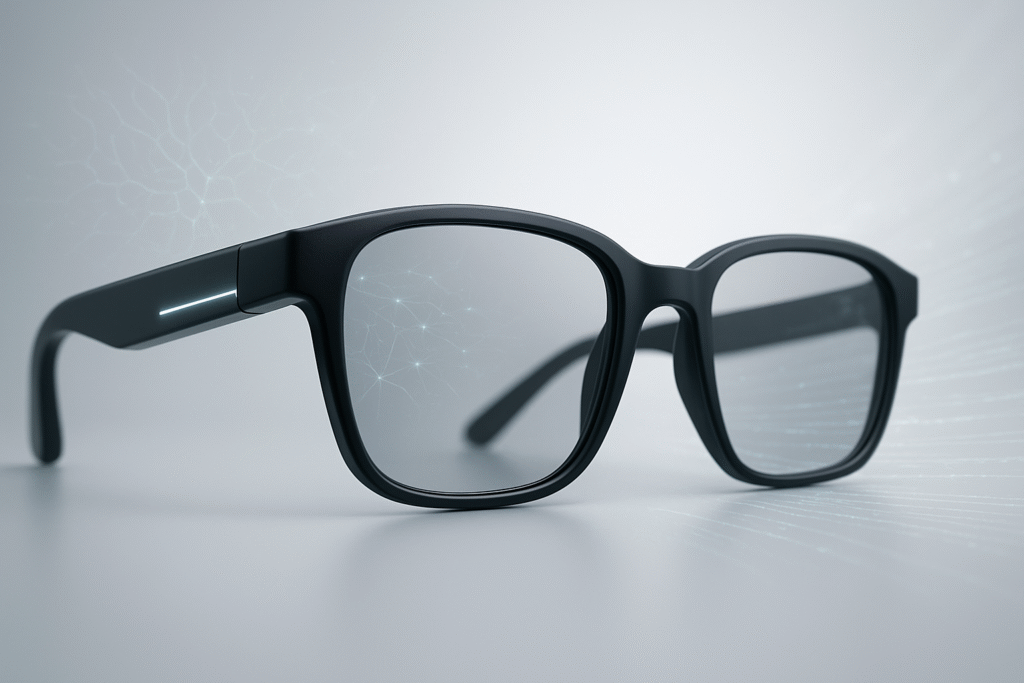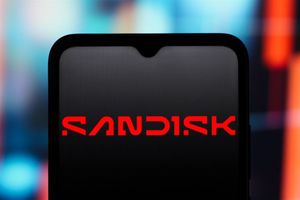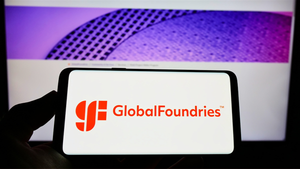
Apple (NASDAQ: AAPL) is reportedly making a significant strategic pivot, shifting its focus from an overhaul of the Vision Pro headset to prioritize the accelerated development of AI-powered smart glasses. This decision marks a substantial redirection in the tech giant's wearable technology roadmap, signaling a strong intent to compete in the burgeoning market for more accessible and integrated AI wearables. The move underscores Apple's recognition of the challenges faced by the high-priced, immersive Vision Pro and its ambition to deliver a more mass-market friendly device that integrates seamlessly into daily life.
This strategic redirection reflects a calculated response to the current market landscape, where consumer demand appears to favor lightweight, socially acceptable smart eyewear over bulky, albeit powerful, mixed-reality headsets. By reallocating engineering resources and accelerating its AI glasses project, Apple is setting the stage for a new era of personal computing, heavily reliant on artificial intelligence and a revamped user interaction paradigm.
A Clear Vision for AI: Shifting Resources from Immersive to Integrated
Apple's decision to halt the development of a cheaper and lighter iteration of its Vision Pro headset (reportedly code-named N100 or "Vision Air") in favor of AI-powered smart glasses highlights a fundamental re-evaluation of its wearable strategy. The initial Vision Pro, launched at a premium price point of $3,499, has faced considerable criticism for its prohibitive cost, substantial form factor, and niche appeal, leading to an underwhelming market reception and slower-than-anticipated adoption rates. Reports suggest sales have fallen short of initial projections, with some estimates placing units sold below 1 million since its February 2024 launch. This stands in stark contrast to the unexpected success and growing traction of more discreet, AI-equipped smart glasses from competitors like Meta (NASDAQ: META).
Apple is reportedly pursuing at least two distinct models of AI-powered smart glasses. The first, an iPhone-dependent model (N50), is envisioned as a companion device that offloads much of its processing to a connected iPhone, notably lacking an integrated display. This design choice aims to achieve a significantly lighter, more comfortable, and potentially more affordable product, with a target price point below $1,000. This model is anticipated to be unveiled as early as next year, with a potential market release in 2027. The second, more advanced version, will feature an integrated display, and its development timeline is reportedly being accelerated to directly compete with display-equipped smart glasses already entering the market from rivals.
The technical specifications and capabilities of these AI glasses are expected to revolve heavily around advanced AI integration, with a strong emphasis on voice controls powered by a "next-generation Siri." This revamped virtual assistant, anticipated for a spring 2026 launch, is central to the user experience, enabling seamless interaction through natural language. Key features are likely to include integrated cameras for recording, multiple microphones for superior voice command recognition, speakers for audio playback, and advanced health-tracking capabilities. Crucially, Apple plans to offer these glasses in a variety of styles and frame options, consciously positioning them as a fashion accessory rather than a purely technical gadget, a significant departure from the utilitarian design of the Vision Pro. This strategic shift moves away from the complex, immersive, and isolated experience of mixed reality towards a more subtle, always-on, and socially integrated form of spatial computing.
Reshaping the Wearable Landscape: Industry Implications and Competitive Dynamics
This strategic pivot by Apple carries profound implications for the AI and tech industries, reshaping competitive landscapes and potentially disrupting existing product categories. By prioritizing AI glasses, Apple is directly intensifying its rivalry with Meta (NASDAQ: META), which has already established a strong foothold in the smart eyewear market with its successful Ray-Ban Meta Smart Glasses. Meta's early success demonstrated a clear consumer appetite for a more discreet, fashion-forward, and AI-integrated wearable, a segment Apple now aims to dominate. This move will undoubtedly accelerate the race for advanced, AI-powered wearable devices, pushing both companies to innovate rapidly in areas like on-device AI, natural language processing, and sensor technology.
Beyond Meta, this shift also puts pressure on other tech giants and startups exploring the wearable space. Companies like Google (NASDAQ: GOOGL), which has its own history with smart glasses, and numerous smaller firms developing niche AR/VR hardware, will need to reassess their strategies in light of Apple's renewed focus. The emphasis on an iPhone-dependent model initially suggests a tight integration within Apple's existing ecosystem, further solidifying customer loyalty and creating a powerful new accessory category. This could potentially disrupt the market for traditional smartwatches and other personal tech, as AI glasses could absorb some of their functionalities, offering a more seamless and hands-free interaction with digital information.
Apple's market positioning stands to gain significant strategic advantages. By moving towards a more affordable and aesthetically pleasing form factor, the company aims for mass-market adoption, something the Vision Pro struggled to achieve. This democratizes access to spatial computing and AI-driven experiences, potentially creating a new paradigm for how users interact with technology daily. The reallocation of engineering talent and resources from the Vision Pro overhaul to the AI glasses project signifies a clear directive from Apple's leadership, indicating a strong belief in the long-term potential of this product category. This focus will also likely redirect developer attention, spurring the creation of new applications and experiences specifically tailored for the AI glasses ecosystem, particularly around the capabilities of the "next-generation Siri" and integrated camera functionalities.
Broader AI Landscape: A New Frontier for Ubiquitous Computing
Apple's strategic shift to AI glasses fits squarely within the broader AI landscape and emerging trends towards ubiquitous and ambient computing. The move signifies a strong endorsement of the concept that AI should be seamlessly integrated into our daily lives, accessible without the friction of traditional screens or bulky hardware. This vision aligns with the industry-wide push for more natural human-computer interaction, where voice, gestures, and contextual awareness driven by AI become primary modes of engagement. The development of an "iPhone-dependent" model, initially lacking its own display, underscores a belief that the true power of AI glasses lies not in a standalone immersive experience, but in enhancing and extending the capabilities of existing personal devices, acting as an intelligent interface to the digital world.
The potential impacts of this development are far-reaching. On one hand, it could accelerate the adoption of AI-powered assistants and contextual computing, making information and digital services more readily available in real-time. Imagine receiving subtle, AI-driven notifications about your surroundings, instant translations, or augmented navigation cues directly within your field of vision or through discreet audio. This could revolutionize how we work, learn, and navigate our environments. However, potential concerns also arise, particularly regarding privacy. The integration of cameras and microphones into an always-on wearable device raises questions about data collection, surveillance, and the potential for misuse. Apple's historically strong stance on privacy will be rigorously tested as it ventures into this highly sensitive product category.
Comparing this to previous AI milestones, Apple's move echoes the transformative impact of the original iPhone, which integrated multiple technologies into a single, intuitive device, fundamentally changing personal computing. While not a breakthrough in core AI research, this strategic hardware pivot is a significant step in democratizing AI's application. It represents a commitment to moving AI beyond cloud-based services and into personal, wearable hardware, similar to how smartphones brought powerful computing into everyone's pockets. The emphasis on a "next-generation Siri" also suggests a significant investment in improving conversational AI, a critical component for natural interaction with these glasses. This development marks a pivotal moment in the evolution of wearable technology, potentially defining the next major platform shift after smartphones.
The Road Ahead: Anticipated Developments and Future Challenges
The immediate future following Apple's strategic pivot will likely see an acceleration of internal development and external partnerships aimed at bringing its AI glasses to market. Experts predict that the initial iPhone-dependent model (N50) could see a public unveiling as early as next year, with a potential market release in 2027. This timeframe suggests intense engineering efforts to refine the hardware, optimize the AI integration, and ensure seamless connectivity with the iPhone ecosystem. The subsequent display-equipped model, while further out, is also expected to see an accelerated development timeline, driven by the competitive landscape.
Potential applications and use cases for these AI glasses are vast and varied. Beyond basic notifications and hands-free communication, we can anticipate advanced augmented reality overlays for navigation, real-time language translation, intelligent contextual information delivery (e.g., identifying landmarks or products), and even sophisticated health and wellness monitoring. Imagine a device that discreetly guides you through a new city, provides instant nutritional information about food, or offers personalized fitness coaching based on your activity and surroundings – all without pulling out a phone. The revamped "next-generation Siri" will be crucial, enabling highly intuitive voice commands and proactive AI assistance.
However, significant challenges lie ahead. Miniaturization of powerful AI chips, efficient battery life, and robust connectivity in a sleek, fashionable form factor remain formidable engineering hurdles. User acceptance and overcoming the "glasshole" stigma associated with early smart glasses will also be critical. Apple will need to strike a delicate balance between functionality, design, and privacy to ensure widespread adoption. What experts predict next is a fierce innovation race, particularly in on-device AI processing to reduce reliance on cloud computing, and in the development of sophisticated yet unobtrusive display technologies for the more advanced models. The integration of advanced sensors for environmental awareness and biometric data will also be key areas of focus.
A New Chapter for Apple and AI Wearables
Apple's strategic shift to halt the Vision Pro overhaul and instead focus its considerable resources on developing AI glasses marks a pivotal moment in the company's trajectory and the broader evolution of personal computing. This decision underscores a clear recognition of the market's demand for more accessible, integrated, and socially acceptable AI-powered wearables, moving away from the niche appeal of immersive mixed-reality headsets. The immediate significance lies in Apple's renewed commitment to democratizing spatial computing and defining the next generation of human-computer interaction through advanced AI.
This development holds profound significance in AI history, not as a breakthrough in foundational AI research, but as a critical step in the commercialization and widespread integration of AI into everyday life. By leveraging its ecosystem and design prowess, Apple aims to make ambient intelligence a tangible reality for millions. The move solidifies the trend towards ubiquitous computing, where AI seamlessly augments our senses and interactions with the world.
In the coming weeks and months, industry observers will be closely watching for further details on Apple's AI glasses roadmap, particularly any glimpses of design patents, software development kits, or official announcements regarding the "next-generation Siri." The competitive response from rivals like Meta (NASDAQ: META) and Google (NASDAQ: GOOGL) will also be a key area to monitor, as the race to dominate the smart eyewear market heats up. This strategic pivot by Apple is not merely a change in product focus; it represents a bold statement about the future of personal technology, where AI-integrated wearables are poised to become the next indispensable device.
This content is intended for informational purposes only and represents analysis of current AI developments.
TokenRing AI delivers enterprise-grade solutions for multi-agent AI workflow orchestration, AI-powered development tools, and seamless remote collaboration platforms.
For more information, visit https://www.tokenring.ai/.






